Tillandsia krukoffiana
Click thumbnails for full size, scaled to a new window.
Tillandsia krukoffiana
Species, Bolivia.
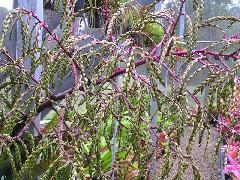
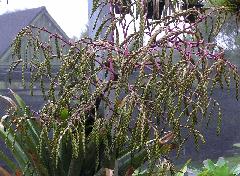
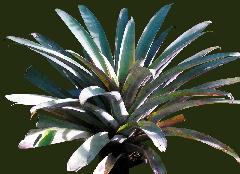
| Photo by Ken Woods, 10/05, Mike Symmons garden. |
Richard Harper 07/09. |
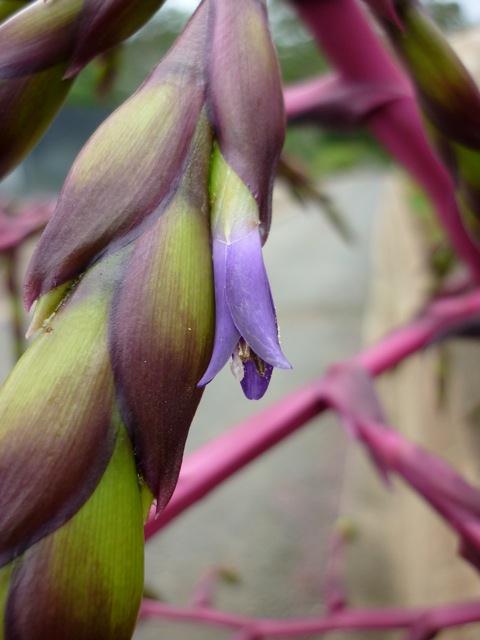

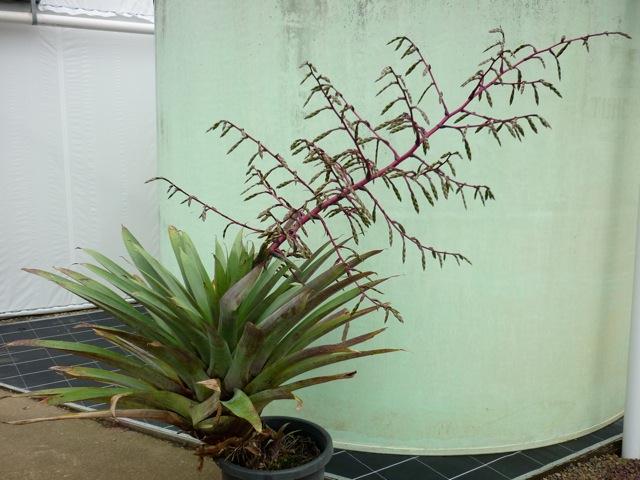
| Peter Tristram 12/10. Selby clone, from Mike Symons |
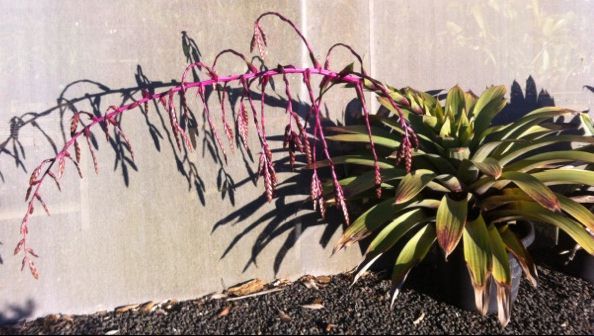


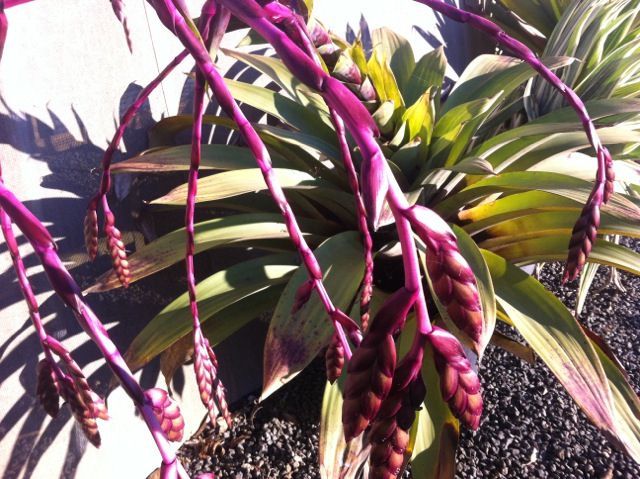
| Bruce Dunstan 11/03. This plant was from Peter Tristram, who got his original plant from Lotte. Like other clones of krukoffiana it produced large amounts of adventitious pups. Wider leaves and a felt like indument on the young leaves were two characters that made it different in my mind from the other two clones I have grown. The colour is close to real but showing a pinker colour to the more commonly grown clone. |
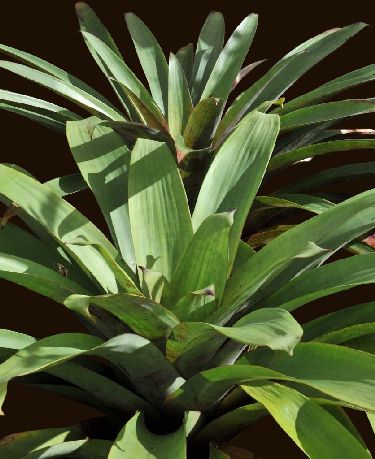
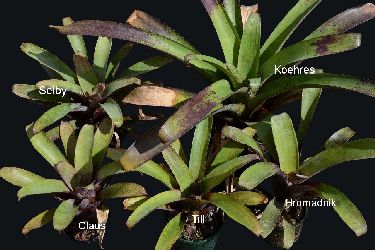 Peter Tristram ... "According to the database this plant comes from Chapare, Cochabamba, Bolivia (2000m but back up the range a bit to get that elevation). Attached is a comparative photo taken in June with the Selby plant that Harry gave me in 1998 at the rear. It is all over the place now. They look very different in foliage. I have at least 4 other krukoffiana-lookers from Germany that are finally beginning to flower. I think I need another acre of nursery..."
Peter Tristram ... "According to the database this plant comes from Chapare, Cochabamba, Bolivia (2000m but back up the range a bit to get that elevation). Attached is a comparative photo taken in June with the Selby plant that Harry gave me in 1998 at the rear. It is all over the place now. They look very different in foliage. I have at least 4 other krukoffiana-lookers from Germany that are finally beginning to flower. I think I need another acre of nursery..."
Len Colgan ... "Peter, for all it is worth, I collected this species near Mataral, west of Santa Cruz, a bit higher up that the locations of T. samaipatensis. This habitat is a long way from the location you mentioned. In fact, there is a creek at that spot, and if you walk along it for some time, you would find many different bromeliad species, especially tillandsias. If anyone ventures there, ..."
Peter Tristram (2013) ... "How great to see these lovely species in habitat! You've certainly seen some terrific habitats, Len.
The photo shows 5 plants from different sources and all slightly different in foliage and pupping. There are at least a couple of others, from Uwe Scharf and Petra Hensel, that I missed for the photo. Only the Selby and Hromadnik plants were actually named krukoffiana. I am sure at least a couple of the others will prove to be krukoffiana when they bloom but were invariably named samaipatensis when I got them. T. samaipatensis is quite a different looking species and nowhere near as generous with adventitious pups. The Germans don't seem to have bloomed any of them to know what they are so I will repot and fertilise generously and frequently and see how soon I can bloom them (Ethrel might help eventually too)!"
Peter Tristram (2016) ... "Some years ago, before the Australian government heard of Xylella, I imported a small pup of this form of T. krukoffiana from Lotte. It is much wider leafed than the usual form which I obtained from Harry Luther in 1988, my first visit to Selby Gardens, as a small adventitious pup. It is also much furrier when before mature leaves develop. I also find that Lotteís plant cannot take full sun without burning. Many of you will have this lovely monster too. Unfortunately the big baby fell over a few times recently but itís still a delight to see."
Peter Tristram 06/23 ... "Unfortunately, due to a nasty dose of Covid-19, I was unable to attend the BSQ Tillandsia Day. I managed to do a talk about the edithae alliance, based on work by Michael Barfuss at the Uni of Vienna, Austria. More on that soon.
Another group I was going to discuss is the 'australis' group. Pam Butler even brought a member specimen along, I gather. Recent examination of this group will affect nearly all of you because, many years ago, I imported a small adventitious pup from Marie Selby BG, Sarasota, Florida, USA, labelled T. krukoffiana (which survived and pupped like mad). There has been much discussion about this species over the years, including following Len Colganís trips to Bolivia, when attempts were made to identifiy some giant tank Tillandsias that he photographed. Doubts were discussed but no conclusions were made that I am aware of. I wonder what happened to the plant that Len said he collected 'near Mataral, west of Santa Cruz, a bit higher up that the locations of T. samaipatensis'? Does anyone know?
Well, extensive taxonomic and archival investigations and DNA sequencing have reached conclusions. Our plant, and the look-a-likes I obtained in Europe under a variety of names, are not T. krukoffiana but the species are more closely related to T. australis and samaipatensis than the real-deal krukoffiana. See the image of the a piece of the phyogenetic tree as it was a couple of days ago. It includes the samples from Graeme Barclay's collection (of a number of plants from me originally), including the Selby plant. The new name is T. zizkae and the full story will be in the next issue of Die Bromelie. As for T. krukoffiana, it is unlikely to be cultivation in Australia, though there are still large unbloomed Bolivian species from my European trips.
I suggest you keep the tags as they are but add T. zizkae, especially after the description is published. Michael revealed all of this at Kiwi Broms too.
The so-called broad-leafed T. krukoffiana from Lieselotte is there too, a species nova. I have it in bloom and will be sending the spike (and numerous other samples) to Austria soon, hoping that the paperwork I have been sent will ensure the plant materialsí safe arrival."


| Peter Tristram 06/23 |
Ray Clark 06/23 |
Ray Clark ... "Hi Peter. I read your message with interest as I have a plant here named T. krukoffiana, it came to me about ten years ago from Wholesale Broms and for some reason I think tissue culture was involved but I could be mistaken.
I don't recall flowering this plant yet, I've only just found a place in the garden where it is happy. Interested to know your thoughts please."
Updated 01/07/23















